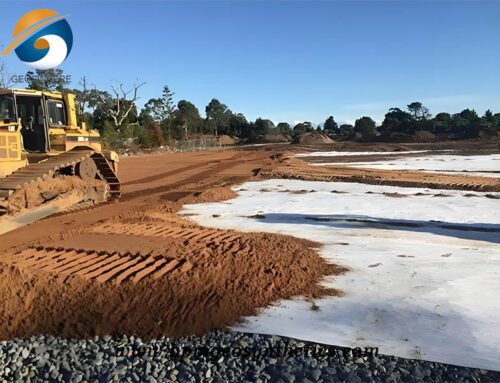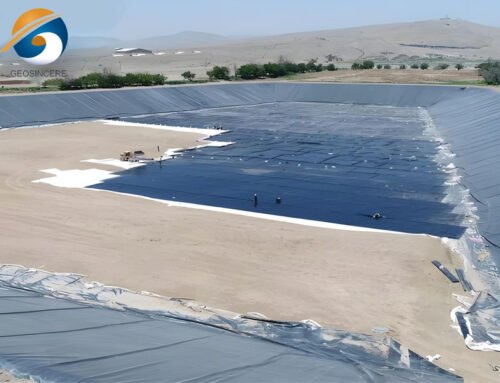How to use geotextile in road construction project? This is frequently asked questions on the construction method of geotextile road fabric. You know, geotextile fabrics are the permeable geosynthetic materials used in civil engineering projects to improve soil characteristics. Among them, road construction is the important application field of geotextile fabric. Geotextile can make poor soils more suitable and reliable to improve road construction efficient and effective due to its special abilities to separate, filter, protect, drain and reinforce soils. This article tries to describe the hot topic – how to use geotextile in road construction project?
1. What Are Main Characteristics of Geotextile
1.1 Characteristics of geotextile
Geotextile fabric is applied to soil, and its raw materials include polypropylene, polyester, polywashing amine, etc. From the perspective of product types, it can be divided into two categories such as woven (spun) fabrics and non-woven fabrics. The so-called woven fabrics are fibers obtained from polymers, then spun into threads, and woven into regular fabrics on a loom. The so-called non-woven fabric is directly made of synthetic fibers by needle-punch bonding, thermal bonding and chemical bonding without going through the weaving process. Since the raw material of geotextile is chemical fiber products such as polypropylene, it has the advantages of strong chemical resistance, high melting point, and high strength. Compared with woven fabrics, non-woven fabrics have lower cost, simple process, high yield and no tensile strength. Significant directionality, so non-woven fabrics are currently widely used geotextiles in the world.
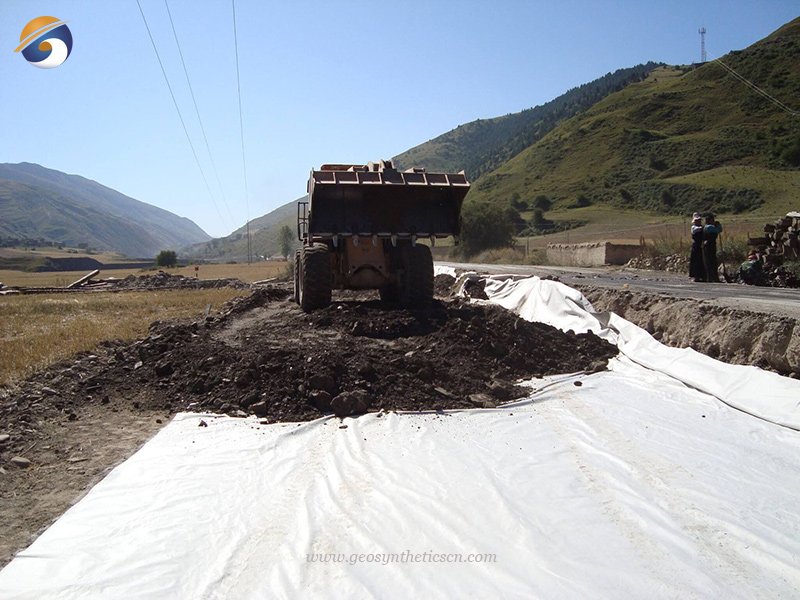
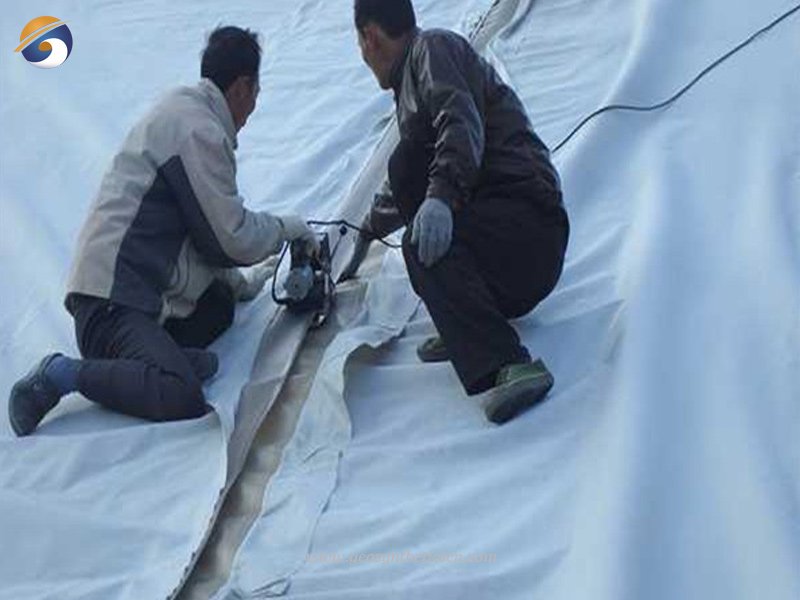
1.2 What Are The Main Functions and Applications of Geotextile Fabric
The functions of geotextiles as building materials are multifaceted. The following basic functions and applications have been recognized by experts, designers and manufacturers.
1.2.1 Geotextile in Road Construction – Separation
Geotextile fabric can effectively prevent the mixing of two kinds of soil materials with different particle sizes, so as to avoid mutual mixing or soil loss. This function is very useful for building road or railway foundations on soft soil. The economy shows that if there is no geotextile in some cases, it is actually impossible to build on such a foundation, because the filling material will directly sink into the subsoil. Therefore, the application of geotextile is an economical and effective solution.
1.2.2 Geotextile in Road Construction – Filtration
The use of geotextile as a filter layer is the same as the graded gravel layer. The geotextile fabric has the advantages of strong chemical resistance, high melting point, high strength, stability and anti erosion. For example, in hydraulic structures, rivers and lake banks are affected by wave impact or wave water level changes, which will reduce the stability due to soil erosion. A geotextile filter layer is laid between the river embankment and the retaining structure. It can prevent the erosion of the soil and prevent the river bank from collapsing.
1.2.3 Geotextile in Road Construction – Drainage function
The geotextile itself can form a drainage channel, collect the water in the soil in the fabric, slowly drain the soil along the fabric, and build roads in soft soil areas with high water content. Special machinery can be used to build roads in soft soil areas. The geotextile is inserted into the soil, and the groundwater flows out of the ground along the geotextile column and enters the permeable sand layer or geotextile to remove the roadbed.
1.2.4 Geotextile in Road Construction – Reinforcement
The geotextile is sandwiched in the aggregate-geotextile-soil foundation system, which can disperse the vehicle load to a larger area and reduce the pressure of the load on the soil foundation. Under the action of the load, the soft soil foundation will be deformed. Because the geotextile has a certain degree of toughness and elongation, the geotextile is deformed and embedded in the soil foundation, so that the entire system forms a continuous structure, improves the stability of the structure, and improves the bearing capacity of the soil foundation.
2 Precautions for Geotextile Construction
2.1 Geotextile in Road Construction – Surface preparation
First, clean the pavement so that there is no debris on it, preferably with water. Repair cracks larger than 0.6cm on the pavement. Asphalt concrete, asphalt sand, and cement concrete can be selected as the repair material according to the unused situation.
2.2 Geotextile in Road Construction – Spraying sticky layer oil
Spray the sticky layer oil on the pavement with a hot asphalt distributor. The amount of oil depends on the oil absorption rate of the pavement, and the general amount is between 0.9-1.2kg/㎡. It is generally better to use asphalt of 60 or more for the oil number.
If the method of sticking layer oil is adopted twice, the first time the amount is between 0.5-0.7kg/㎡, then the asphalt geotextile is laid, and the sticky layer oil is sprayed on the asphalt geotextile, and the amount is between 0.4-0.5kg/㎡.
2.3 Geotextile in Road Construction – Paving Surface
When laying the geotextile, make sure that the coiled material is at a certain height from the ground.When laying the geotextile in road construction, it should be as straight as possible to give a certain pulling force. The overlap length between the cloth width and the cloth width is required to be 4-7.5cm.
2.4 Geotextile in Road Construction – Paving Stone Chips
After the fabric is fully combined with the sticky layer oil, sprinkle rubble on it. The rubble can generally be melon seeds or medium-coarse sand. The amount of rubble depends on the oil panning on the surface of the fabric, generally about 2m³/k㎡.
2.5 Geotextile in Road Construction – Laying geotextile for Large Area
The fixer includes a fixed nail and a fixed iron sheet. The fixing nails can be cement nails or shot nails, the nail length is about 8cm, and the iron sheet is fixed with iron strips with a thickness of 1mm and a width of 3cm. A hand hammer or a nail gun can be used to fix the nails, and a high-speed nail gun can be used in the case of relatively close rooms at the grassroots level.
At the same time, the geotextile should be kept dry. If it is exposed to rain, it should be dried before laying it. Do not smoke when laying geotextiles. When the asphalt used to bond the geotextile has cooled down, do the top layer. When the geotextile is in a saturated state, do not drive on it when the hot asphalt has not cooled down, and do not turn around and brake on the laid geotextile.
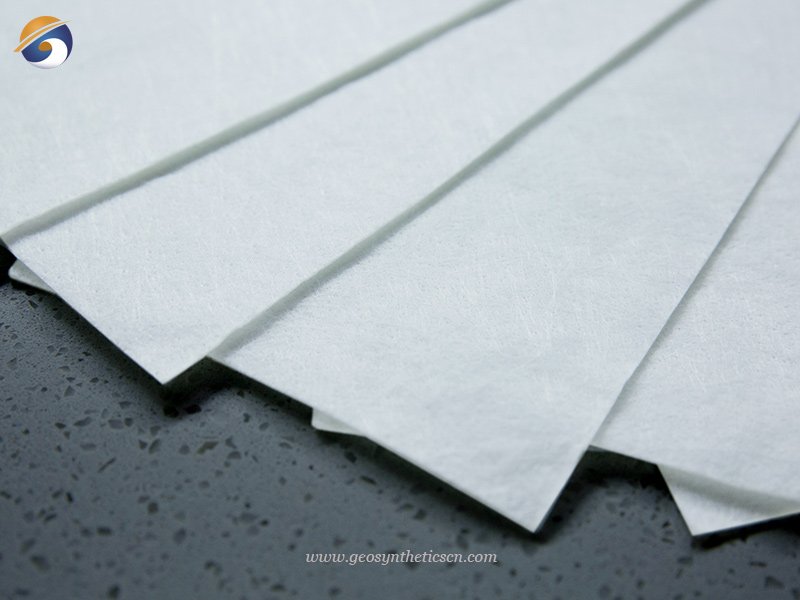
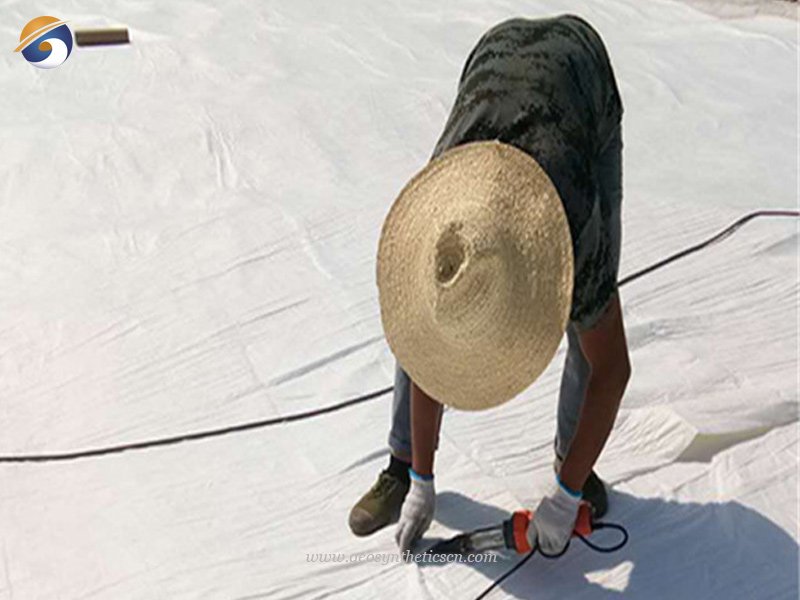
2.6 Geotextile Welding the in Road Construction
When welding and sewing geotextile fabric, overlap the top layer by 2-2.5 inches over the bottom layer. Refer to user manuals or online instructions for guidance.Ensure the geotextile surface is flat and allow for deformation. Installation methods include lap, stitch, and weld. Stitching and welding widths should exceed 0.1m, with overlaps more than 0.2m. Long-term exposed geotextiles should be welded or stitched together.
Continuous stitching is required; spot stitching is not allowed. Road construction requires a 150mm overlap. Maintain at least 25mm distance between smaller needle and selvedge. One-line and chain stitch methods are used.Stitching thread must be resin, with tension over 60N, resistant to chemicals and UV. Re-sew any “drop stitches.” Prevent soil, particles, or foreign matter from entering after installation.Cloth overlaps can be natural, seamed, or welded based on terrain and usage. Geotextile on geomembrane is naturally lapped or sewn/welded using hot air. Hot air welding heats cloth to a molten state for bonding.In wet weather, use double-line stitching with chemical UV-resistant sutures instead of hot air welding.
2.7 Testing for Seam Strength
Refer to ASTM Standard Test Method for Strength of Sewn or Thermally Bonded Seams of Geotextiles, D4884-96. Conventional testing for seam strength of stitching or welding geotextiles includes a destructive shear test. Test Specimen needs to be at least 8-inches (200 mm) wide by 8-inches (200 mm) length. The Specimen width mush have 4-inches (100 mm) on either side of seam width.
3 Conclusion
Geotextile in road construction enhances stability, reduces rutting & cracking, and boosts long-term performance. Application varies by project needs and specs.Adhere to manufacturer guidelines, follow engineering advice, and comply with local regs for best results. Consult geotechnical or road experts for tailored solutions.Effective geotextile integration yields a resilient road structure, enduring traffic, weather, and soil shifts. This proactive strategy extends road lifespan, offering sustainable, cost-efficient infrastructure.
GEOSINCERE is the professional geotextile and geosynthetics manufacturer and wholesaler. Our main innovative, high quality products include geotextiles, geomembranes, geogrids, geocells, geosynthetic clay Liner, and drainage boards, etc al.
Thank you for reading.


